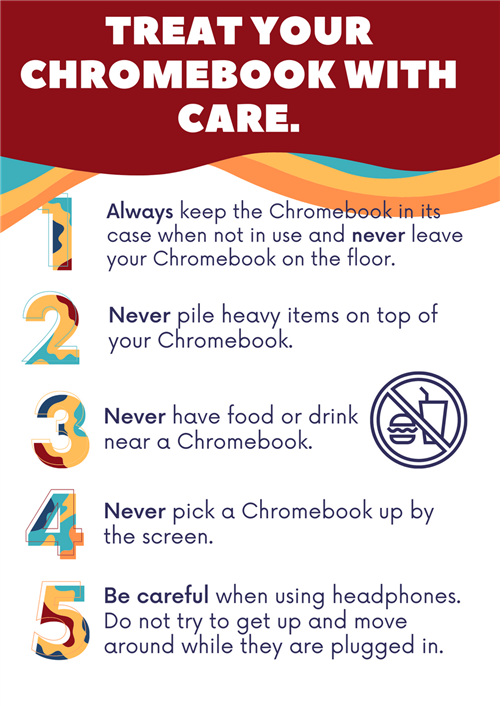- A Chromebook needs to be returned to your child’s school or a Family Technology Support Center if one or more of the following are true.
- A student leaves a School District of Philadelphia school and enrolls in a charter school, private school, or parochial school
- A student moves out of Philadelphia and enrolls in a school outside of the School District of Philadelphia
- The Chromebook is damaged or not working
- A student’s school requests that the device be returned
Tips for Chromebooks!
A WiFi network is the backbone of modern households. Today, with so many families learning and working from home, it’s more important than ever to understand your home WiFi network. Our local “WiFi Doctor,” Comcast Senior Technical Operations Manager Ken Sedberry, shares five simple tips to help families improve the health of their home WiFi network, ensuring students can rock remote learning this school year:Tip #1: Place your Gateway or router in the center of your home. It’s best to choose a centralized location, ideally in the room where you use your devices most (avoid the basement, garage or far corner of your home). And, check that the cables are tight! A loose connection can have a big impact on the performance of your network. Tip #2: Make sure your Gateway or router is in an open area, clear of obstructions. Appliances, water sources, wireless electronics or being hidden in a cabinet are examples of obstructions that can interfere with your connection. Tip #3: Be aware of activities that draw more bandwidth – conferencing (via Zoom, Microsoft Teams, etc.), video streaming and gaming draw more bandwidth. Look at the bandwidth for your internet package and whether it’s sufficient for your needs. Consider pausing gaming or streaming while others in the household are on important video calls. You can also hardwire devices to the Gateway or router to ensure a strong and steady connection. Tip #4: The device can make the difference! Test devices in different parts of the home. Many school-issued computers may need to be used in the same room as the Gateway or router. Also, older devices can only process so much speed, no matter how fast your internet or router speed is. Tip #5: Utilize the Xfinity xFi app to run speed tests, and monitor your home WiFi network – in addition to having visibility into the speeds your experiencing on specific devices, the xFi app allows parents to pause devices, set screen time limits for kids and see what devices are connected to your home WiFi network.
One of the best ways to extend the life of school-issued Chromebooks is to ensure that they don’t get lost or damaged in the first place. Education for students on how to care for technology should start early and continue for the entirety of each school year.
“It’s about making sure that they understand that these are things we have to do all of the time,” Stapf says. “We have to teach our grownups how to take care of the things as well, because we don’t always put the pieces together.”
Chromebook care best practices include:
- Food safety: Remind students not to eat or drink around their devices. “One school had to do pest control because of a kid that ate crackers over their Chromebook every day at snack time,” Stapf says. Crumbs and liquids can easily get into keyboards, but students aren’t always thinking about this when using their devices.
- Transportation safety: Go over how to safely pick up and carry devices. Picking a Chromebook up by the LCD can damage the screen or leave a thumbprint impression that makes the device inoperable. When it comes to carrying devices, “close it, carry it like a book, hug it in the hallway,” Stapf says.
- Backpack safety: Make students aware that Chromebooks can get damaged when they are inside of their backpacks. They shouldn’t drop or throw their bags with devices inside, and they should be aware of what else they’re transporting. “Their water bottles could open up and spill all over everything,” Stapf notes.
These tips can help better protect Chromebooks, keeping them in use for much longer in a school system and helping IT teams get the best possible ROI.



